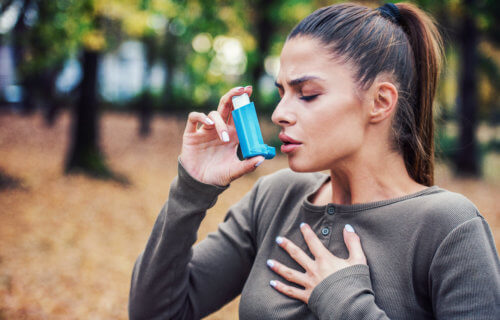RIVERSIDE, Calif. — Pollution isn’t always the fault of humans, scientists suggest. According to researchers from University of California-Riverside, it turns out that hotter temperatures can cause plants to emit harmful emissions and dust, increasing its release by as much as 14 percent. When you combine that with all the other pollutants coming from wildfires, traffic, and industry, the new study warns that it’s going to get much harder to breathe in the coming years.
“We are not looking at human emissions of air pollution, because we can change what we emit,” says lead author James Gomez, a UCR doctoral student, in a university release. “We can switch to electric cars. But that may not change air pollution from plants or dust.”
Plants produce chemicals called biogenic volatile organic compounds (BVOCs) that are involved in plant growth, development, reproduction, and defense.
“The smell of a just-mowed lawn, or the sweetness of a ripe strawberry, those are BVOCs. Plants are constantly emitting them,” Gomez says.
By themselves, BVOCs aren’t inherently harmful. However, once they react with oxygen in the air, they produce organic aerosols that can wreak havoc once inhaled. They are implicated in both infant mortality and childhood asthma, and even heart disease and lung cancer in adults. Plants can raise their BVOC production in response to carbon dioxide in the atmosphere as well as rising temperatures, factors which scientists expect will keep increasing over time. It’s projected that two-thirds of pollution in the future will actually come from plants.

More pollutants and dust will blow around the globe
The team wants to emphasize that this doesn’t mean that plants are bad for the environment by any stretch. In fact, they lower the amounts of available atmospheric carbon dioxide, which in turn helps combat climate change. Additionally, BVOCs from small-scale gardens aren’t a cause for health concern.
“Your lawn, for example, won’t produce enough BVOCs to make you sick,” Gomez explains. “It’s the large-scale increase in carbon dioxide that contributes to the biosphere increasing BVOCs, and then organic aerosols.”
Dust from the Saharan desert is the second natural source projected to be responsible for increased future pollution. As the climate continues to warm, more Saharan dust is likely to blow all around the world, with parts of Africa, the eastern United States, and the Caribbean seeing more of it. In parts of Northern Africa, more dust is expected, which is likely attributed to more powerful monsoons in West Africa.
Aerosols and dust are classified as pollutants called PM2.5, meaning this fine particulate matter has a diameter of 2.5 micrometers or less. The goal is to ideally have less, not more PM2.5 in the air, since it has a direct relationship to CO2 levels.
“The more we increase CO2, the more PM2.5 we see being put into the atmosphere, and the inverse is also true. The more we reduce, the better the air quality gets,” Gomez concludes.
The team hopes that their findings help advocate for swift and informed decisions to be made by officials in order to reduce CO2 emissions, especially because temperatures are largely going up quickly and not down.
The findings are published in the journal Communications Earth & Environment.

